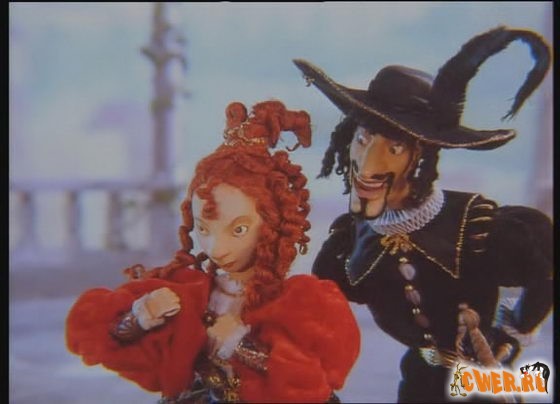 I am not easily pleased in the theatre – especially with regard to Shakespeare and productions thereof. We’ve suffered (the text and I) more bad than good over the years, and few productions have left me either totally convinced or newly informed.
I am not easily pleased in the theatre – especially with regard to Shakespeare and productions thereof. We’ve suffered (the text and I) more bad than good over the years, and few productions have left me either totally convinced or newly informed.
You will understand my hesitancy then about entering the open-to-the-elements courtyard of a local school to see a production of one of the more popular Shakespeare texts – on a night when the weather threatened and with an audience very few of whom were native speakers of English.
That night I went home more than satisfied: For the first time I’d seen a stimulating ‘Romeo and Juliet’ which I would unreservedly recommend to both novice and expert. I was both entertained (continuously) and learnt new things about the text, about Shakespeare production and the resourcefulness limited resources can impose.
The Globe Theatre, London sent out its touring team on a short European tour and landed up here in Timisoara, Romania – in the middle of what is turning out to be a hot summer: They brought the storm clouds with them (but thankfully not the rain).
As befits a company who aim to deliver Shakespeare productions for modern audiences informed by Elizabethan staging and practices, this touring company is reduced in numbers (a cast of 7: 3 females, 4 males) reduced in set (one battered van and two metal pillars) and great in energy.
Lines are taken at a ‘fiery footed’ pace – there is a serious attempt to make this a ‘two hours traffic’ of a performance, which has some pretty interesting consequences for both actors and audience. Principle amongst them is the reduction in what I can only call ‘emotiveness’ – no time in this production for dwelling on the luxury of romantic moments or the beautiful rolling of sounds.
Paradoxically, this doesn’t reduce the power of the words or the strength of feeling of the characters, or the demands placed on the actors: I’ve never before experienced the heady mixture of an awareness of character emotion, the separation of that emotion from the intelligence of the writing and an admiration for the verbal dexterity brought to the lines by the performer all at the same time. What was a shock was a realisation of this early on in the performance, Romeo’s first dialogue with Benvolio, as it happened. Many times I have been able to reflect back on a performance and separate out the fusion of these elements; this is the first time I’ve been made so aware of the elements and how well they have been fitted together, in real time. Multi-tasking!
Throughout the rest of the performance I never lost sight of this ‘keeping faith’ with the text. It is a keeping faith – surely this is the speed Shakespeare intended when writing, and the text benefits from performance at the speed.
A second consequence of the treatment of the lines in this way was the actors speaking for meaning before feeling – and a consequent clarity of text. I actually understood the ‘Friar’ talking about herbs, and believed the actor understood too! In the interval I spoke with a student whose English I’d describe as adequate-business and asked if he was following –
“Easily,” came the reply.
That is as strong a testament as I can give to the production.
By sticking to the ‘Elizabethan’, the company also had to deal with the issue of doubling.
I’ve long suspected Shakespeare’s plays need parts to be doubled to give a dimension of theatricality and an inter-textual frame of references which one person per part causes to evaporate. Here, with only seven actors, there was a need for extreme doubling and the potential for confusion.
Apart from the very end (where one actor shifts from the Friar to old Capulet and then to old Montague), there was no confusion - it was easy to follow which character the actors were playing.
Each role was clearly defined by the cast, who made apparently light work of what could have been a serious difficulty. The result was a series of significant connections usually lost in reading (and in most productions).
Romeo kills twice – both times here it was the same actor he ‘killed’ – the doubling of Paris and Tybalt begs the question of Romeo’s innocence and youth – OK, the first death is possibly excusable, but the second?
The Prince and Mercutio are the same actor – when the Prince talks of loosing family, you get an extra point when you have just seen him die on stage!
Old Montague, Old Capulet and the Friar are all the same actor – setting up a resonance which unites these characters – they are of equal dignity, could they also be equally tired of the dispute, be equally desirous of some means for settling and have been equally receptive to Romeo and Juliet uniting?
Old Capulet battles with Tybalt at the party, the Friar with Romeo later – a perennial theme of age versus youth; different youth, same age.
What was brilliant here was the actors’ and the production’s ability to suggest ‘type’ whilst differentiating individuals. A token cross and coat turned character – but the actor had to shift personality too: No doubt that the be-sandaled, trendy, socially aware, Anglican vicar was different from the ‘used to getting my own way’, businessman Capulet.
There was even room for a doubling joke – the servant Peter was played by all 5 of the cast who doubled parts. Which left Romeo and Juliet un-doubled (if I ignore the opening, ritualised, fight).
Around these two ‘pure’ characters an ensemble performed – Romeo and Juliet became the centre in a remarkable way, much as a piano might in a concerto, surrounded by orchestra.
The amount of work each and every actor had to do also neutralised the tendency to look for stars – this was real ensemble work. No person stood out –either above or below the others. Celebrity was subverted to the text, the production benefited.
The production also benefited from some serious directorial input.
There was a reassessment of several of the characters. Romeo, instead of the usual moony eyed wet, got a bit of guts (helped, I have to say, by the Mancunian accent). The scene with the Nurse and the Friar after Romeo’s banishment was turned on its head - this was an angry despair, this was a testosterone driven lament which overpowered both the Friar and the Nurse. Another first – I didn’t want to slap Romeo at this point, I actually felt he was being driven by forces outside his power to control.
There was also a remarkable attention to detail. In another Romeo scene, the one where he buys the poison, the Apothecary is usually played as something of an aside. Here, the director took the ‘need’ of the character and gave us a bit of stage business which really brought home the desperation of this character but also the import of Romeo’s lines – Romeo takes the drug and withholds the money – sheer desperation drives the Apothecary to scramble and fight and moan, frightened she’d been tricked. When Romeo finally passes over the money, his lines concerning the corruptible power of money had a significance.
The fact that the Apothecary was played by the actor who played Lady Capulet also left another hint of resonance – Lady Capulet seeks unadulterated revenge, slaughter, death, but is impotent to deliver it despite all her wealth and influence; the economically impotent Apothecary, desperate to help and sustain life, is forced to deliver the means for Romeo’s death. Theatrical (rather than dramatic) Irony at its most potent.
And theatrical was a watchword for the production..
Shakespeare uses the theatrical as a metaphor throughout all his stage works – at no point does he want you to forget these are actors playing the part, that this is a stage, not the real world, that these are ideas given flesh and, as human constructs, pale reflections of whatever truth is.
At the most serious moment, a joke can slip in – alienating the emotion. Towards the end, Peter pops up, played by yet another actor. The actors include elements of the real world into the false world of the play. Here in Timisoara, Romeo points at the real school building in whose courtyard the play is being performed, when he talks of love going to school; Capulet points to the church next to the school when he talks of Juliet going to church; Juliet’s talk of the lark in the morning is serendipitously accompanied by the evening chorus of local birds, all singing their hearts out; and, in the background, as the deaths are played out, a real bat flits above the stage catching the moths attracted by the stage lights.
There are many more things I could say of the production – the use of the van, the really great balcony scene, the humour – but I think the most important thing is I feel changed, just a little, by the production. I have been forced to reassess a play I thought I knew and to find in it a dignity which it had lost.
Thank You to the performers, the backstage crew and all who were responsible for giving me the chance to revive – it was a real ‘Shakespeareance’.
Technorati Tags:
Shakespeare,
Globe Theatre,
Romeo and Juliet



 When you pick it up – and that is the first experience many people will have of the full text of any Shakespeare (this is, after all, mistakenly considered one of the easier and safer plays to do with young people) … as I was saying … when you pick it up, it feels good: Not too heavy; clear flexible binding (which state school in England could afford the hardback?); good colourful picture with suitably dramatic facial expressions; clean white paper – which falls open to give a tantalizing glimpse of lots of space and not too intimidating amounts of print.
When you pick it up – and that is the first experience many people will have of the full text of any Shakespeare (this is, after all, mistakenly considered one of the easier and safer plays to do with young people) … as I was saying … when you pick it up, it feels good: Not too heavy; clear flexible binding (which state school in England could afford the hardback?); good colourful picture with suitably dramatic facial expressions; clean white paper – which falls open to give a tantalizing glimpse of lots of space and not too intimidating amounts of print. the time) in execution:
the time) in execution:
 One pops along to the site and discover lots of lovely new things - several linking to Shakey and his times ... Not least a John Donne who I'd sware was doing a pre-Hamlet pose ...
One pops along to the site and discover lots of lovely new things - several linking to Shakey and his times ... Not least a John Donne who I'd sware was doing a pre-Hamlet pose ...






